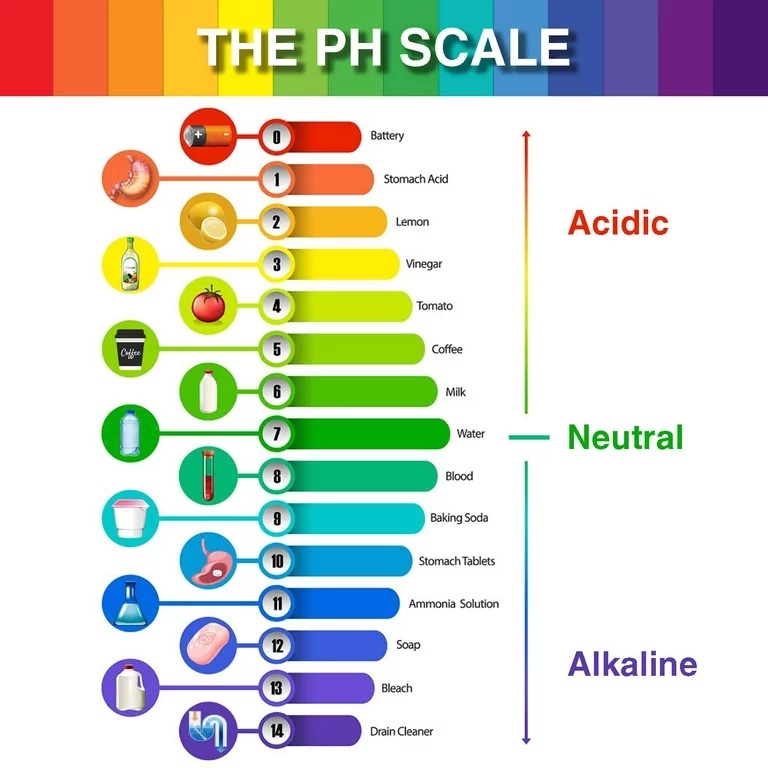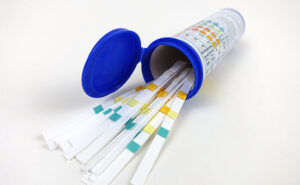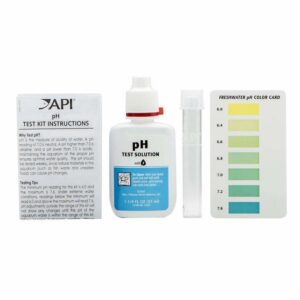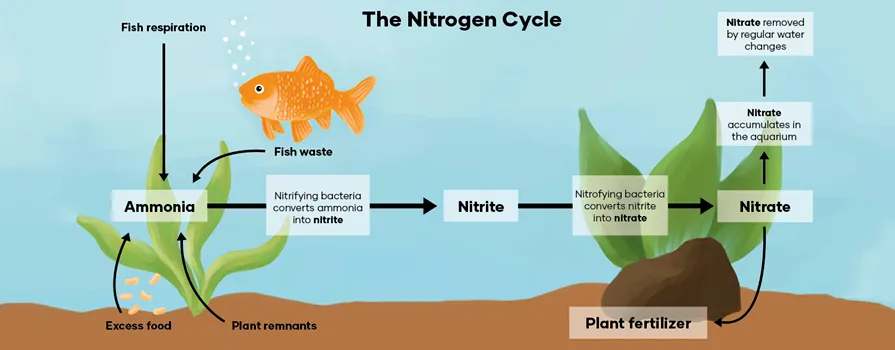pH is a fundamental parameter in shrimp keeping that every aquarist should understand. It plays a crucial role in the health and well-being of your shrimp, affecting everything from their shell development to their ability to reproduce.
Definition of pH
pH is a measure of how acidic or alkaline (basic) a solution is. The term “pH” stands for “potential of hydrogen,” referring to the concentration of hydrogen ions (H+) in a solution. In aquariums, pH indicates the acidity or alkalinity of the water.
The pH scale ranges from 0 to 14:
- 0-6.9: Acidic
- 7: Neutral
- 7.1-14: Alkaline (or basic)
It’s important to note that the pH scale is logarithmic, not linear. This means that each whole number on the scale represents a tenfold change in acidity or alkalinity. For example, a pH of 6 is ten times more acidic than a pH of 7, and a pH of 5 is a hundred times more acidic than a pH of 7.
In shrimp keeping, most species thrive in a pH range of 6.5 to 7.5, though some species have more specific requirements. Understanding and maintaining the correct pH is essential for creating a stable and healthy environment for your shrimp.

How pH Affects Shrimp
pH is a critical factor in shrimp keeping, directly influencing various aspects of shrimp biology and the overall health of your aquarium ecosystem.
Impact on shrimp health
- Molting process: pH significantly affects the molting cycle of shrimp. In optimal pH conditions, shrimp can molt successfully, allowing for proper growth and development. However, incorrect pH levels can lead to molting problems, potentially causing death during this vulnerable period.
- Shell formation: The pH of the water influences the availability of minerals necessary for shell formation. In overly acidic water, shrimp may struggle to extract enough calcium and other minerals from the water, leading to weak or malformed shells.
- Reproduction: Many shrimp species are sensitive to pH when it comes to breeding. Incorrect pH levels can inhibit breeding behaviors or affect the viability of eggs and larvae.
- Stress levels: pH outside the optimal range causes stress in shrimp, weakening their immune systems and making them more susceptible to diseases and parasites.
- Osmoregulation: pH affects the shrimp’s ability to regulate their internal salt balance, which is crucial for their survival in freshwater environments.
Consequences of pH fluctuations
- Sudden die-offs: Rapid changes in pH, even within the “acceptable” range, can lead to shock and potentially fatal consequences for shrimp.
- Reduced lifespan: Chronic exposure to suboptimal pH levels, even if not immediately fatal, can reduce the overall lifespan of shrimp.
- Behavioral changes: Shrimp may become less active, hide more often, or show reduced appetite when pH levels are unstable or outside their preferred range.
- Impaired growth: Consistent pH fluctuations can stunt the growth of shrimp, as they expend more energy adapting to changing conditions rather than putting it towards growth.
- Breeding issues: Even if adult shrimp can tolerate slight pH variations, these changes can be detrimental to eggs and young shrimp, potentially leading to failed breeding attempts or high mortality rates among offspring.
- Ecosystem imbalance: pH fluctuations don’t just affect shrimp directly; they can also impact beneficial bacteria, plants, and other microorganisms in the tank, potentially destabilizing the entire ecosystem.
Understanding these impacts underscores the importance of maintaining stable and appropriate pH levels in your shrimp aquarium. Regular monitoring and careful management of pH are essential for the long-term health and success of your shrimp colony.
Causes of pH Changes in Aquariums
Understanding the factors that influence pH in your shrimp tank is crucial for maintaining a stable environment. Several natural processes and external factors can cause pH fluctuations.
The nitrogen cycle
The nitrogen cycle is a fundamental biological process in aquariums that can significantly impact pH:
- Ammonia production: As organic waste decomposes, it releases ammonia, which can increase pH.
- Nitrification: Beneficial bacteria convert ammonia to nitrite, then to nitrate. This process produces hydrogen ions, gradually lowering pH over time.
- Accumulation of nitrates: High levels of nitrates can lead to a gradual decrease in pH if not managed properly.
The photosynthesis cycle
Aquarium plants and algae undergo photosynthesis, which can cause daily pH fluctuations:
- Daytime increase: During photosynthesis, plants absorb carbon dioxide, which can cause pH to rise slightly during the day.
- Nighttime decrease: At night, plants release carbon dioxide through respiration, potentially lowering pH.
- Planted tanks may experience more pronounced swings due to this cycle.
Other factors affecting pH
Several other elements can influence the pH in your shrimp aquarium:
- Water source: Tap water pH can vary based on your location and local water treatment methods.
- Substrate choice: Some substrates, particularly those designed for planted tanks, can lower pH over time.
- Driftwood and botanicals: These materials often release tannins, which can gradually lower pH.
- Insufficient KH (carbonate hardness): Low KH reduces the water’s buffering capacity, making it more susceptible to pH swings.
- Overcrowding: More shrimp produce more waste, potentially accelerating pH changes.
- Overfeeding: Excess food decomposition can alter pH levels.
- CO2 injection: Common in planted tanks, CO2 addition lowers pH.
- Water changes: Depending on the source water, regular water changes can either stabilize or alter tank pH.
- Mineral rocks or crushed coral: These can slowly raise pH and increase water hardness.
- Atmospheric CO2: In open-top tanks, CO2 exchange with the air can influence pH.
Understanding these factors allows shrimp keepers to anticipate potential pH changes and take proactive measures to maintain stability. Regular monitoring and appropriate interventions are key to keeping your shrimp in optimal conditions.
How to Test pH in Your Aquarium
Regularly testing the pH of your shrimp tank is essential for maintaining a healthy environment. There are several methods available, each with its own advantages and limitations.
Test strips
 Test strips are a quick and easy way to check pH:
Test strips are a quick and easy way to check pH:
- Process: Dip the strip in the aquarium water and compare the color to the provided chart.
- Pros:
- Inexpensive
- Easy to use
- Quick results
- Cons:
- Less accurate than other methods
- It can be difficult to distinguish between similar colors
- Limited shelf life once opened
Liquid test kits
 Liquid test kits are widely used and offer good accuracy:
Liquid test kits are widely used and offer good accuracy:
- Process: Add a few drops of the test solution to a water sample and compare the resulting color to a chart.
- Pros:
- More accurate than test strips
- Cost-effective for frequent testing
- Longer shelf life than strips
- Cons:
- Takes more time than strips
- Requires careful measurement of water and reagents
- Color interpretation can be subjective
Electronic pH meters
Electronic pH meters provide the most precise measurements:
- Process: Calibrate the meter, then immerse the probe in the aquarium water for a digital reading.
- Pros:
- Highly accurate
- Provides exact numerical values
- Easy to read results
- Some models can continuously monitor pH
- Cons:
- More expensive initial investment
- Requires regular calibration and maintenance
- Probe life is limited and replacement can be costly
When testing pH, regardless of the method:
- Always follow the manufacturer’s instructions carefully
- Test at the same time each day for consistency
- Avoid testing immediately after water changes or feeding
- Consider testing both in the morning and evening to detect daily fluctuations
- Keep a log of your readings to track trends over time
For shrimp keeping, where precise pH control is crucial, using a combination of methods can be beneficial. For instance, you might use test strips for quick weekly checks and a liquid kit or electronic meter for more accurate monthly measurements.
Remember that no matter which method you choose, regular and consistent testing is key to maintaining a stable environment for your shrimp.
Controlling pH in Your Shrimp Tank
The importance of stability
Maintaining a stable pH is often more crucial than achieving a perfect pH value. Shrimp are sensitive to rapid changes, and even small fluctuations can cause stress. Aim for consistent pH levels within the appropriate range for your specific shrimp species.
Methods to lower pH
RO/DI water
- The use of Reverse Osmosis or Deionized water allows precise control of water parameters
- Start with neutral water and adjust as needed
- Requires remineralization to add essential minerals for shrimp health
Buffering substrates
- Specialized aquarium soils designed for shrimp keeping can lower and stabilize the pH
- Examples include ADA Amazonia, Fluval Stratum, and Brightwell Aquatics FlorinVolcanit
- These substrates gradually release humic substances, lowering pH over time
Natural materials
- Driftwood, Indian almond leaves, alder cones, and peat moss can naturally lower the pH
- These materials release tannins, which have slight acidifying effects
- Provide additional benefits like shelter and biofilm development for shrimp grazing

Methods to raise pH
Baking soda (sodium bicarbonate)
- A quick method to raise pH in emergencies
- Use cautiously as it can cause rapid pH changes
- Not recommended for long-term pH management due to potential instability
Crushed coral/aragonite
- Slowly dissolves in water, gradually increasing pH and hardness
- Can be used in filter media bags or sprinkled on substrate
- Provides a more stable, long-term solution for raising pH
Water changes as a pH control method

- Regular water changes help maintain stable pH by replenishing minerals and removing accumulated waste
- Ensure the pH of new water closely matches tank water to avoid sudden changes
- For tanks with buffering substrates, minimize water changes to maintain the substrate’s effectiveness
- In tanks without buffering capacity, more frequent water changes may be necessary to control pH drift
- Drip new remineralized water (such as Lowkeys Great Mineral) back into the tank during a water change to reduce sudden pH fluctuations
When adjusting pH:
- Make changes gradually over days or weeks
- Monitor shrimp behavior closely during adjustments
- Always test pH before and after any interventions
- Consider the relationship between pH and other parameters like KH and GH
- Research the specific pH requirements of your shrimp species
Remember that chasing a perfect pH number can often do more harm than good. Focus on creating a stable environment within the acceptable range for your shrimp species, and make adjustments slowly and carefully when necessary.
Recap of key points
- pH is a measure of water acidity or alkalinity, crucial for shrimp health and tank stability.
- The pH scale ranges from 0 to 14, with 7 being neutral. Most freshwater shrimp prefer a pH between 6.5 and 7.5.
- pH affects various aspects of shrimp biology, including molting, shell formation, reproduction, and overall stress levels.
- Several factors can influence pH in an aquarium, including the nitrogen cycle, photosynthesis, substrate choice, and water source.
- Regular pH testing is essential. Options include test strips, liquid test kits, and electronic pH meters, each with pros and cons.
- Stability is often more important than achieving a “perfect” pH level. Sudden changes can be more harmful than slightly suboptimal but stable conditions.
- Methods to adjust pH include using RO/DI water, buffering substrates, natural materials, baking soda, and crushed coral. Water changes also play a role in pH management.
Importance of monitoring and maintaining proper pH
Maintaining appropriate and stable pH levels is fundamental to successful shrimp keeping:
- Health and longevity: Proper pH supports essential biological processes, promoting shrimp health and potentially extending their lifespan.
- Successful breeding: Many shrimp species require specific pH ranges to trigger breeding behavior and ensure the survival of eggs and shrimplets.
- Ecosystem balance: pH affects not just shrimp, but also beneficial bacteria, plants, and other microorganisms in the tank.
- Early warning system: Changes in pH can indicate other issues in the tank, such as decaying organic matter or problems with filtration.
- Species-specific care: Different shrimp species have varying pH requirements. Understanding and maintaining the right pH is crucial for specialized care.
- Stress reduction: Keeping pH stable reduces stress on shrimp, making them less susceptible to diseases and more likely to display natural behaviors.
- Long-term stability: Consistent pH management contributes to the overall stability of your aquarium, creating a more robust and resilient ecosystem.
Remember, successful shrimp keeping is about creating a stable, balanced environment. Regular monitoring, gradual adjustments when necessary, and an understanding of how pH interacts with other water parameters will go a long way in ensuring a thriving shrimp colony.
By mastering pH management, you’re taking a significant step towards becoming a skilled shrimp keeper. Continue learning, observing your tank, and adjusting your approach as needed. With patience and attention to detail, you’ll create an ideal environment for your shrimp to flourish.










